Beyond SPOT: The next era with ampUSD, Fragments protocol - lvBTC, and lvGOLD
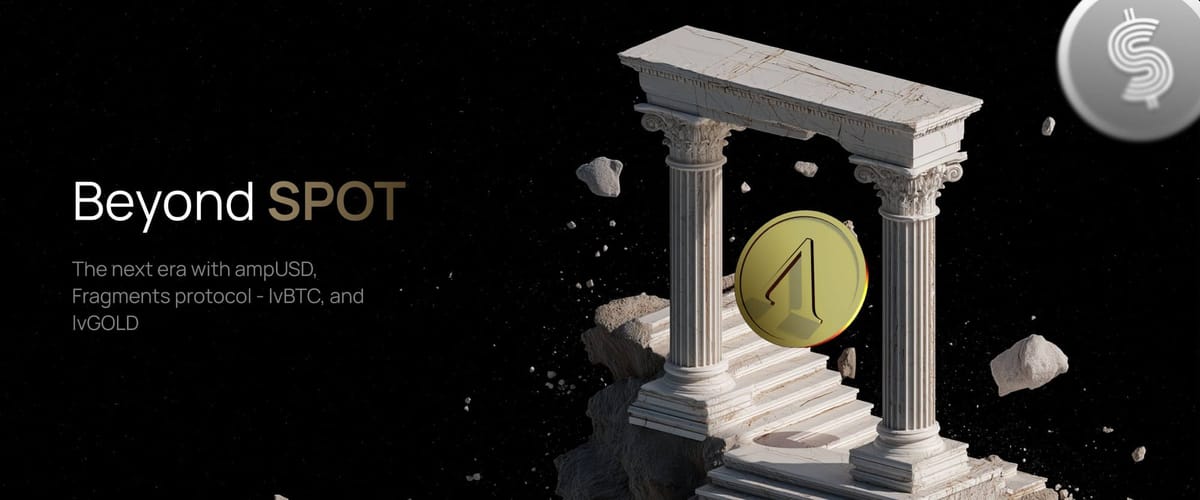
1. Introduction
In the fast growing world of defi, where price swings can make or break a strategy, stability is a rare gem. $SPOT has been that gem for many. It holds steady, tracking real value, facing real consequences through market ups and downs. The entire principle of blockchain technology was to build a truly global and usable currency, yet many decentralized stablecoins today suffer from flawed designs. Traditional banks & institutions often leave users feeling trapped in a system that serves itself. Ampleforth’s products offer a way out, starting with SPOT, a proven asset that holds steady, tracking real value through market ups and downs.
But the LVA ecosystem is just getting started. ampUSD, an inflation-resistant stablecoin powered by Ampleforth and asymmetry, and new Fragments products like lvBTC and lvGOLD are in development, further expanding what "financial freedom without gatekeepers" means today. This article goes through the LVA concept, SPOT’s current role, practical utilities across defi and the future of Ampleforth’s ecosystem.
2. Understanding the LVA concept
Low Volatility Assets (LVAs) are built to sustain the wild swings of the crypto market, offering a stable way to store real value in defi. Unlike traditional stablecoins tied to fiat currencies, which can be easily hit by inflation or institutional failures, LVAs track real purchasing power, like the cost of everyday goods.
With global inflation hovering around 4% in 2025, this matters a lot. Fiat currencies like USD lose their value & are slowly decaying. Unlike many existing stablecoins that rely on fragile mechanisms or centralized collateral like USDC, LVAs like SPOT offer a more resilient solution which is actually aligned with crypto’s first principles.
LVAs, built by Ampleforth, use an elastic supply adjustment daily to keep value steady, not the price.They use tranching, splitting assets into stable and risky parts, so users get true ownership. This is the approach that we need for the existing system where you control your money, not a middleman or a third party.
For a deeper dive into LVAs, check out this overview :
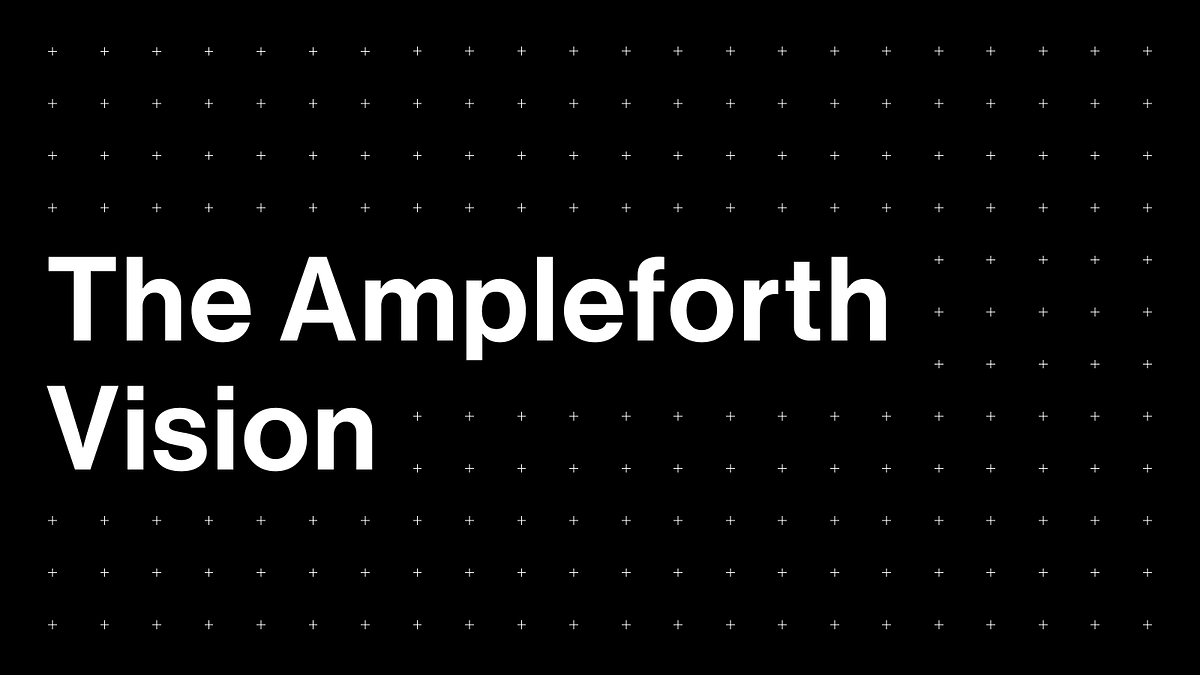
3. SPOT: The pure LVA
The following video provides a clear overview on SPOT
Ampleforth’s flagship LVA, $SPOT is a decentralized flatcoin designed to endure extreme market conditions. SPOT targets the 2019 CPI-adjusted U.S. dollar, keeping its value steady. $SPOT works by tranching it's base asset, $AMPL’s volatility into a stable senior tranche (SPOT) and a riskier junior tranche (stAMPL). Users deposit AMPL to mint SPOT and stAMPL, redeemable back to AMPL anytime, with a one week fixed term before automatic conversion.
The beauty of SPOT is that it harnesses AMPL’s elastic-supply rebasing to deliver low volatility without relying on fiat pegs or centralized reserves. Which eventually turns AMPL’s natural price swings into a feature rather than a bug. For a deep dive on how AMPL’s rebasing mechanics power SPOT’s stability:
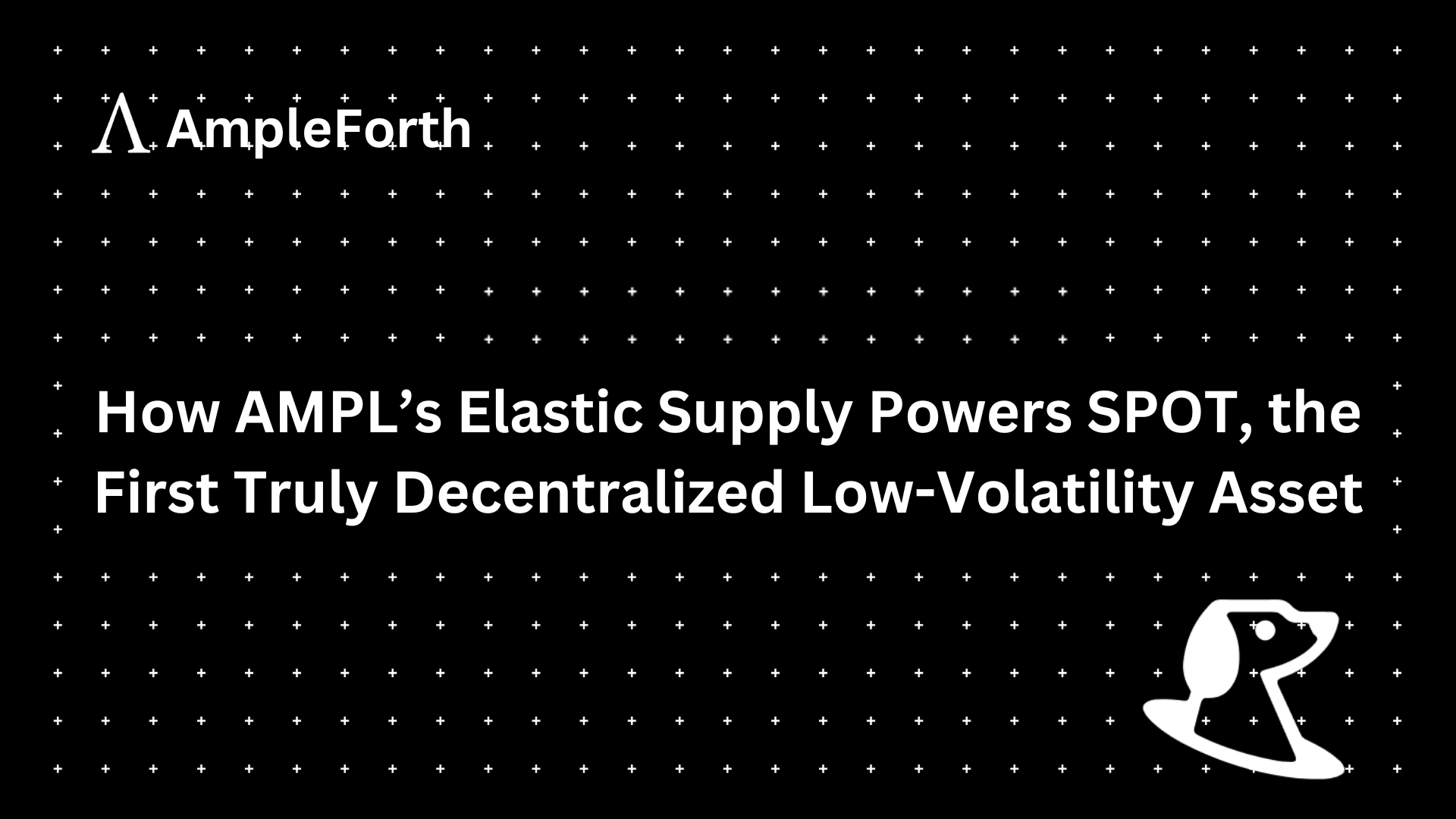
The system is built to bend rather than breaking during events of extreme market conditions and can forever exist as a form of stable value without any bailouts. Moreover, SPOT is a non-runnable, inflation-resistant, has no admin keys, so it can’t be frozen or censored like the existing traditional stablecoins such as Circle USDC, which has blacklisted over $100 million in assets or Tether USDT, which has frozen billions to date. SPOT can be held as an inflation hedge, used as peer-to-peer digital cash, or rotated as collateral in defi, or can be used wherever stablecoins have an application.
SPOT's stability isn't just theoretical. it's been proven under extreme market conditions. The protocol underwent significant stress testing during Operation Bootstrap in early 2025, which ultimately led to the comprehensive Spot v5.0 upgrade. For an in depth look at how SPOT endured Operation Bootstrap and evolved into Spot v5.0, see :
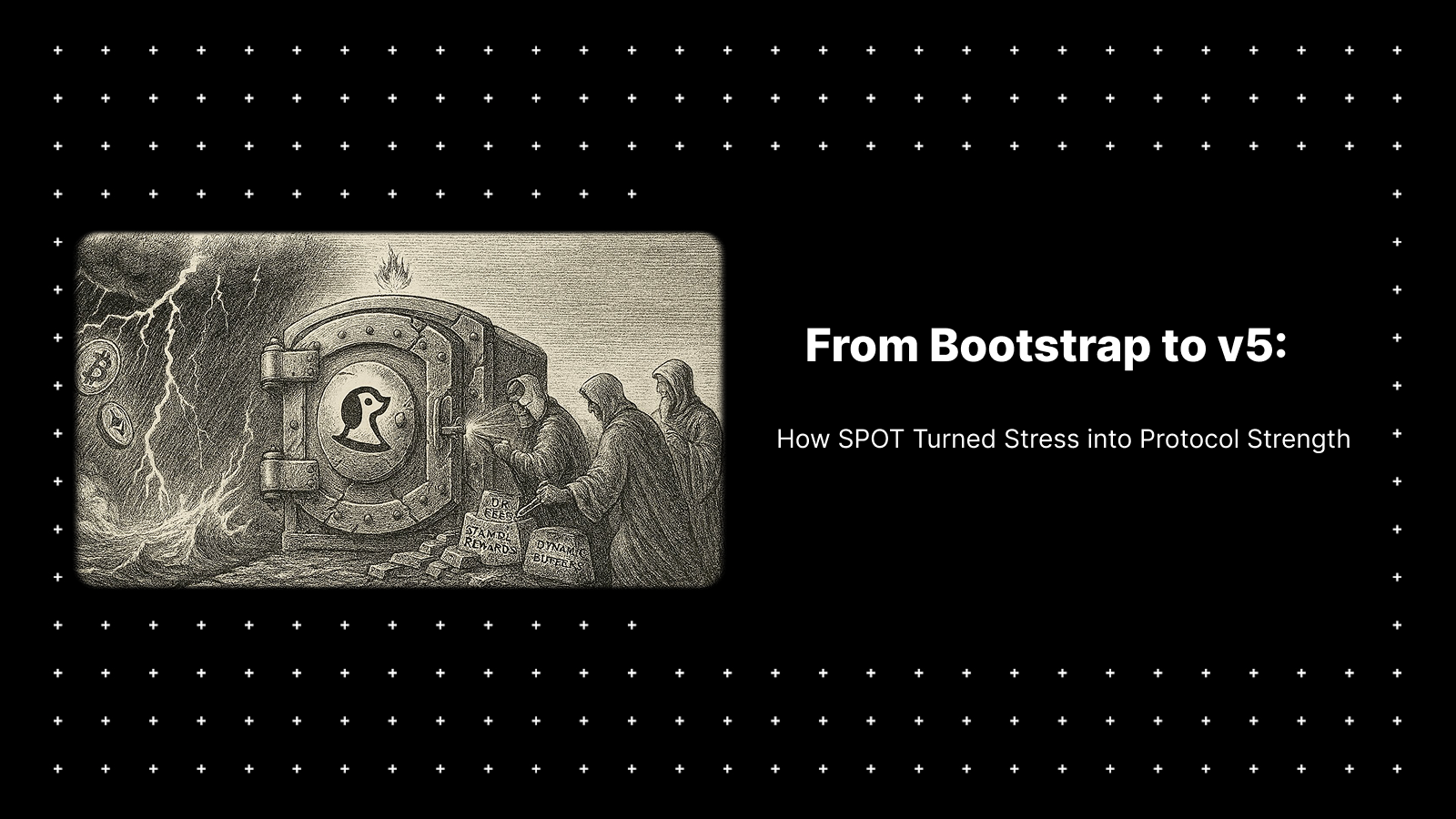
4. ampUSD: The Inflation-resistant stablecoin in making
The naive assumption that all synthetic stablecoins can hold steady through any market condition has long plagued decentralized stablecoin design. Some people even lean on centralized stablecoins like USDC or USDT. But it only dilutes blockchain’s promise of independence further.
Ampleforth along with asymmetry is now building ampUSD, a stablecoin designed to overcome these challenges with inflation resistance and a truly decentralized backbone. ampUSD is designed to hold a $1 peg using a market oracle, backed by SPOT’s stability. Users can deposit AMPL or SPOT to borrow ampUSD, choosing their own risk levels and interest rates. Since SPOT’s value tends to rise with inflation, it can help maintain or improve the loan's health over time. It comes in two different versions: ampUSD for spending and sAmpUSD for earning. You can stake ampUSD to get sAmpUSD, which earns you a decent interest from borrowers and sometimes extra from liquidations. Alternatively, you can provide liquidity to earn rewards.
The system is expected to offer decent yield through stability pools or liquidity providing. This makes it a powerful tool for DeFi users who want high returns without the inflation risks of fiat or the control of banks that lend out your deposits for their profit. Even though ampUSD is still in development, when it launches, it will potentially reshape defi’s future as markets demand real resilience.
5. Fragments Protocol: lvBTC, lvGOLD, and beyond
What if a commodity like gold or bitcoin was made significantly less volatile? What if you could hold their value without worrying about sudden price drops? What if these assets were stable enough for everyday defi use? Ampleforth’s Fragments Protocol building this with lvBTC and lvGOLD, low volatility versions of Bitcoin and gold built for defi’s future.
Many stablecoins stumble in rough markets or rely on centralized systems, betraying defi's ultimate promise of freedom and independence. The Fragments Protocol tackles this by building a stable commodity currency. It splits an asset’s volatility into two parts: a stable senior tranche and a riskier junior tranche. This makes lvBTC and lvGOLD safer to hold. lvBTC, for instance, targets about one-fifth of real bitcoin’s volatility. A backtested data shows average down years of bitcoin standing at -55.94%, compared to lvBTC which stands with -11.73% . ie, as a holder of lvBTC, you would be generating 34.48% average return annually*.

These Low Volatility Assets store you the value of commodities without huge price swings, insulated from inflation and free from centralized control. But what if you want bigger wins and are ready to take risks? What if volatility itself could be your opportunity? That's why ampleforth is building High Volatility Assets (HVAs) . Unlike the steady growth of LVAs, HVAs provide a magnified exposure to the underlying asset without liquidation risk.
In Case of BTC:
- SrBTC is the low volatility version. It is comfortable to hold a steady growth (More apt for wealth accumulators)
- JrBTC is a high volatility version. It offers traders a magnified exposure without the risks of traditional leverage, like liquidation.(Apt for high risk traders)
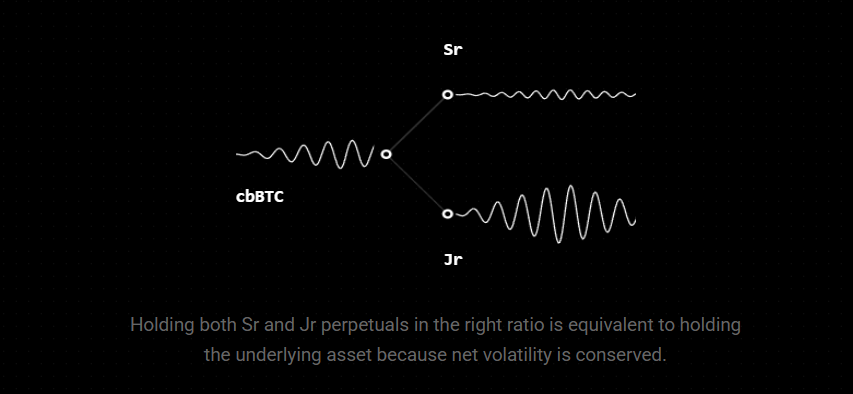
In today’s economy and defi culture, LVAs have a huge potential, so do HVAs. Ampleforth is building fragments protocol with endless potential and possibilities across defi. The platform is still in development, with no confirmed launch date. but this is a potential multi-trillion market in building that could make defi more practical for everyone.
6. Practical Use Cases of LVAs, ampUSD, and HVAs
With ampUSD, LVAs & HVAs still in development, the full impact and utilities of ampleforth products are yet to be seen. However, their potential and opportunities are endless. From being a part of your savings to being a collateral in defi, Ampleforth products can be utilised everywhere across defi.
Portfolio Diversification:
- LVAs like SPOT, lvBTC, and lvGOLD can stabilize your portfolios by balancing high-volatility assets like Bitcoin. For instance, lvBTC’s backtested 34.48% average return with only -11.73% drops in bad years (compared to Bitcoin’s -55.94%) makes it a safer choice for investors seeking steady growth.
Lending and Borrowing:
- LVAs are ideal for DeFi lending platforms like Aave or Compound due to their low volatility, reducing the risk of liquidation. For eg: depositing lvGOLD as collateral to borrow stablecoins like USDC allows users to access liquidity without selling their assets, knowing their collateral's( lvGOLD’s ) value won’t plummet like gold might.
- Similarly, $ampUSD could also serve as collateral or a borrowing asset, offering a completely decentralized alternative to existing synthetic dollars. Users could borrow ampUSD to fund defi strategies, leveraging its inflation resistance to maintain value in a 4% inflation environment.
Liquidity pools on AMMs:
- $ampUSD can be used in liquidity pools on platforms like Uniswap or Aerodrome. Pairing ampUSD with other stablecoins (e.g. ampUSD/USDC) or LVAs (e.g: ampUSD/lvBTC) creates low-risk pools with minimal impermanent loss, earning a decent trading fee. For instance, a user providing liquidity to an ampUSD/lvBTC pool could earn steady returns while the risk is relatively very low. SPOT/USDC pools on Aerodrome are already available and have been showing a consistent performance.
- HVAs like JrBTC, are suited for high-risk, high-reward liquidity pools. A trader might provide liquidity to a JrBTC/ampUSD pool to earn higher fees, though with greater risk.
Yield Farming and Staking:
- ampUSD works with a two-token model (ampUSD for spending, sAmpUSD for earning). Users can stake ampUSD in stability pools to earn sAmpUSD, which generates 15-40% APY from borrower interest and liquidation collateral in Asymmetry..
- LVAs like lvBTC could also be staked in future defi protocols, offering stable yields.
- HVAs, while not actually yield focused, could generate returns through funding rates when market moves sidewards.
Hedging and leverage Trading:
- HVAs like JrBTC are built for traders who seeks to take risk. for eg: a trader expecting a Bitcoin rally could hold JrBTC or long it with leverage, or short it to hedge against a drop. But, it is a high-risk high-reward play.
- LVAs can also be used in leveraged trading though the risk & reward is comparatively low.
Synergies in DeFi Ecosystems:
- A DAO could hold LVAs like SPOT or lvGOLD as a treasury reserve, ensuring stable value for operational costs, while using ampUSD for payments and HVAs like JrBTC for speculative investments. for eg: A DAO could hold 50% in $ampUSD, 30% in LVAs, 20% in HVAs. This creates a flexible ecosystem for diverse needs, from savings to aggressive trading.
- Additionally, $ampUSD can be used for everyday payments as an alternative to USDC.
The utilities of ampleforth products can’t be completely determined before their launch & their full impact is yet to be seen.
7. Conclusion
Ampleforth’s products address fundamental flaws in today's manipulated economy by restoring genuine purchasing power without relying on centralized authorities.
The protocol's evolution, including lessons learned from Operation Bootstrap and the subsequent v5.0 upgrades, demonstrates a commitment to continuous improvement based on real market feedback.
In the current market, LVAs have huge significance, so does ampUSD as an inflation-resistant stablecoin, and so does the broader ecosystem of elastic finance products. These assets represent more than digital tools. They're pathways to financial sovereignty where users can save, trade, and transact without bank delays or centralized controls. Ampleforth's vision centers on stability and opportunity, built through decentralized mechanisms that bend rather than break under market stress.
Having a flatcoin that maintains its purchasing power (tracking CPI) is an important innovation for the global economy and the @AmpleforthOrg team has done an incredible job moving the ball forward with @SPOTprotocol
— Brian Armstrong (@brian_armstrong) July 9, 2024
Check it out if you haven’t already https://t.co/Xo7nWd8ySt
The CEO of Coinbase, Brian Armstrong about ampleforth and spot protocol.
Moving forward, Ampleforth's ecosystem could redefine wealth management, creating a fairer, open system where stability meets opportunity. This isn't just finance. It's economic freedom where your money remains truly yours, ready to shape a more resilient financial future.







